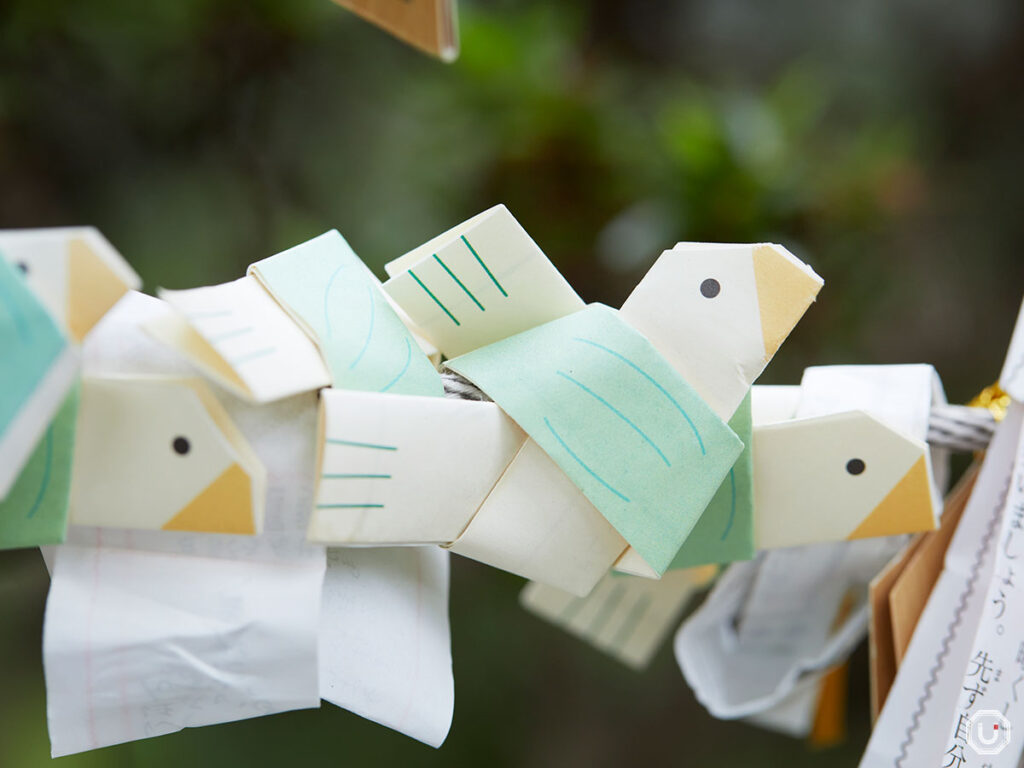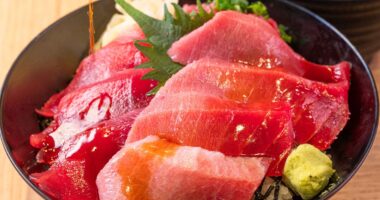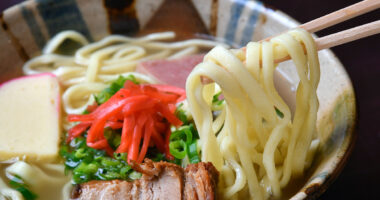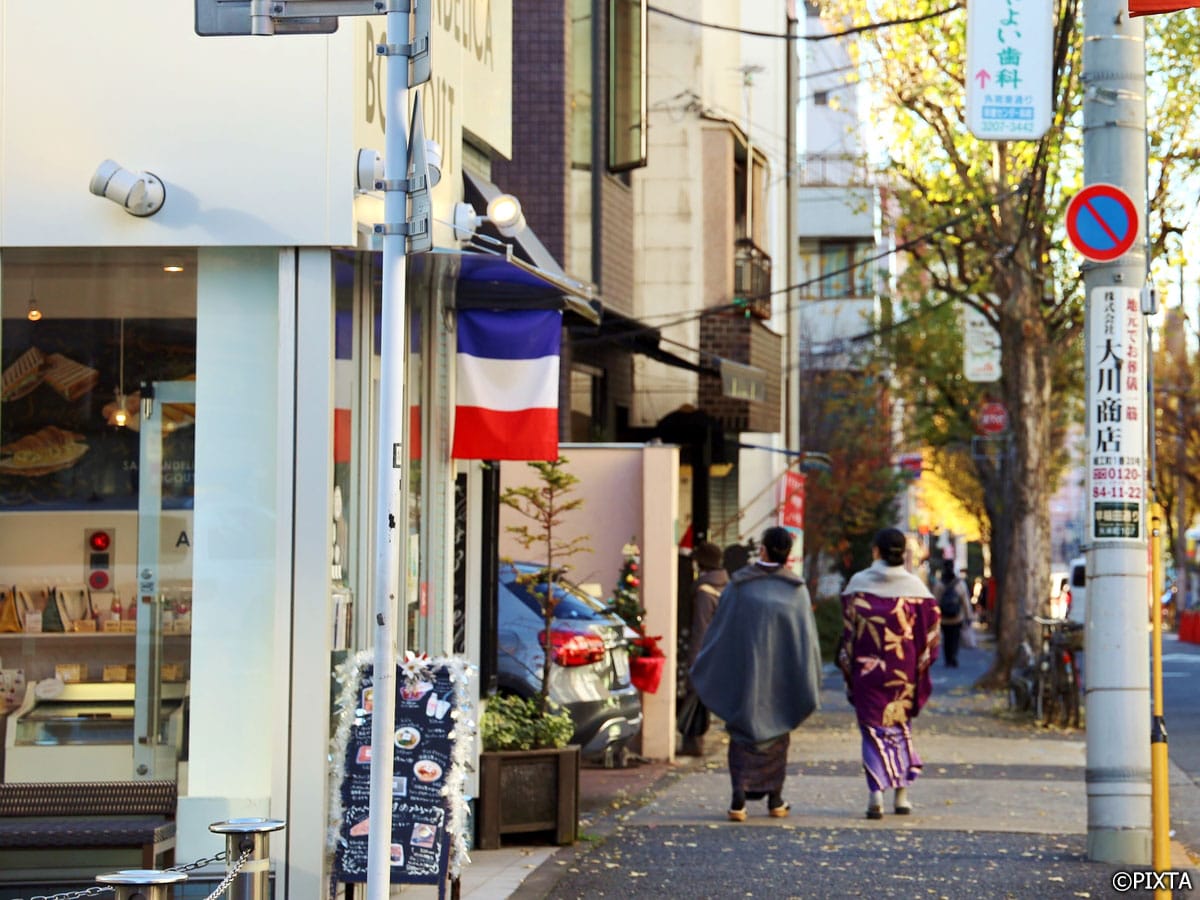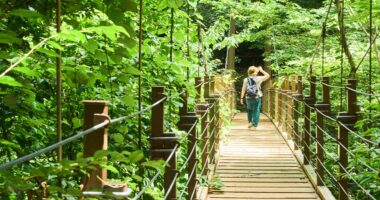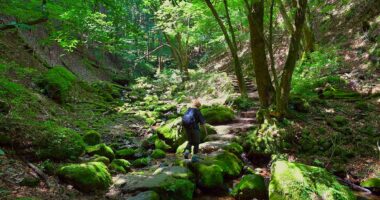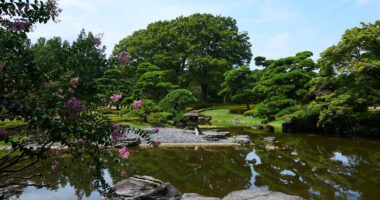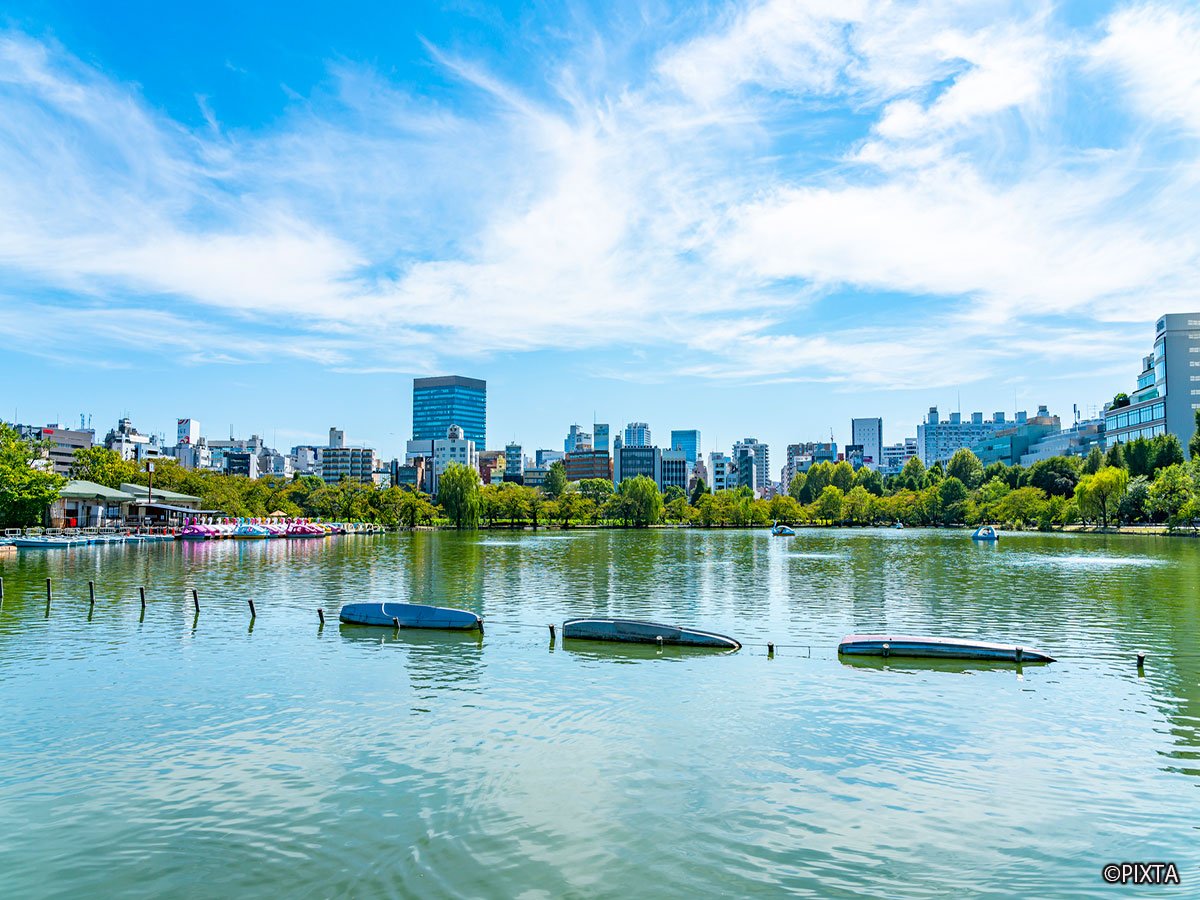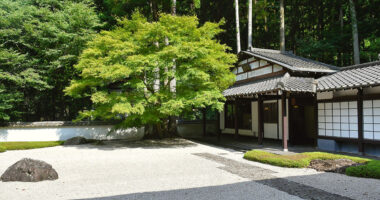Hatonomori Hachiman Shrine is located near the Japan National Stadium, a venue for international competitions. Filled with nature and dominated by a large sacred ginkgo tree, its grounds serve as a peaceful retreat for local residents.
The shrine offers many attractions, including the Sendagaya Fujizuka, a replica of Mount Fuji, and the Shōgidō Hall, which houses a large shōgi (Japanese chess) piece called the ōshō (king general).
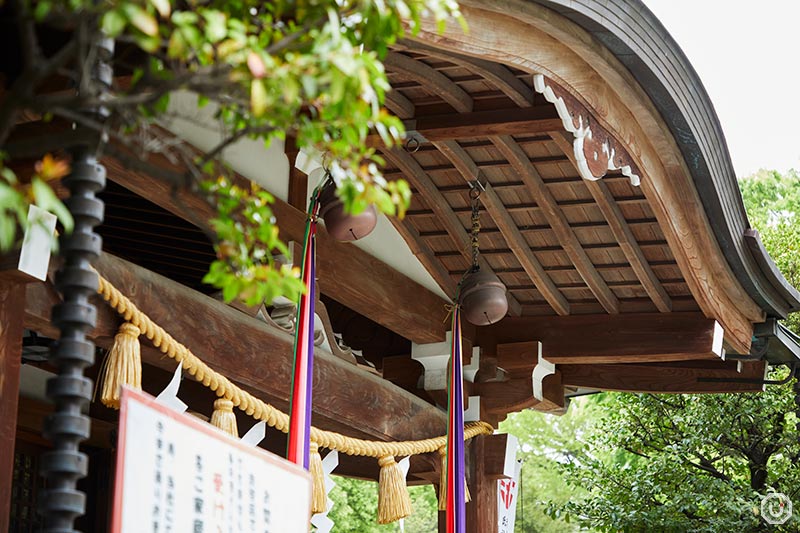
Climbing “Mount Fuji” while staying in Tokyo
Mount Fuji is Japan’s most iconic mountain.
While often seen as a tourist destination, it’s also revered in a belief system known as “Mount Fuji faith.” This faith became popular among commoners during the Edo period. Believers built Fujizuka (replicas of Mount Fuji) around Edo (present-day Tokyo) for those who could not climb the actual mountain.
Climbing a Fujizuka is believed to offer the same benefits as climbing Mount Fuji itself.
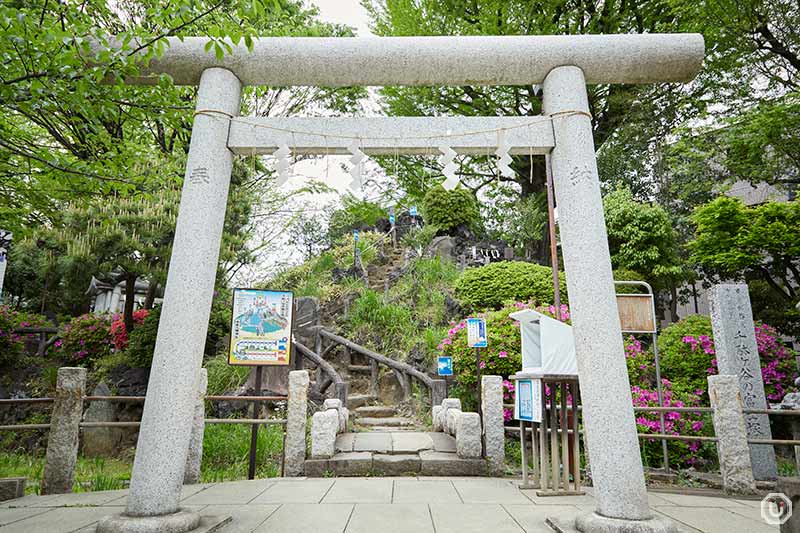
Sendagaya Fujizuka
Sendagaya Fujizuka is one of the few remaining Fujizuka in Tokyo. As a replica of Mount Fuji, it features signs indicating positions and routes to the summit.
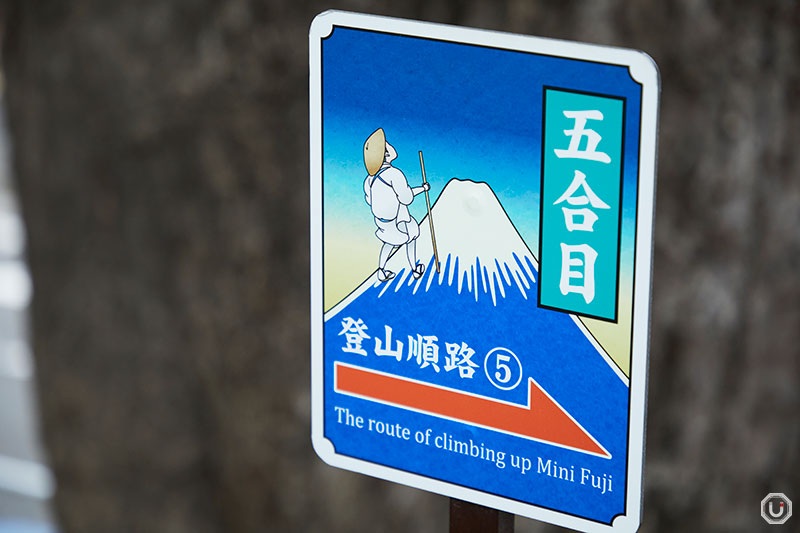
It takes less than five minutes to reach the summit of “Mini Fuji”
At the summit, you’ll find Sengen Shrine. Don’t forget to pay your respects. Sendagaya Fujizuka is a place where you can experience climbing “Mount Fuji” and receive its blessings while still in Tokyo.
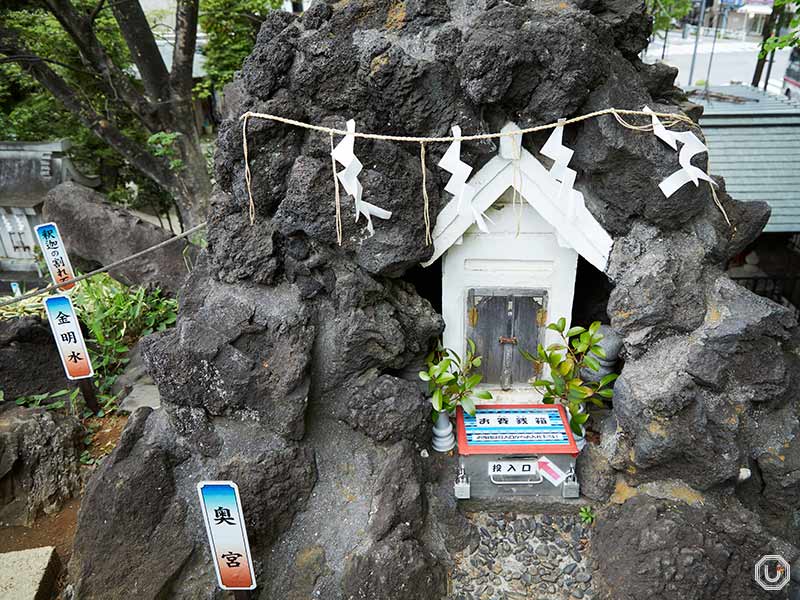
Lava rocks from Mount Fuji are placed at the summit
Shogido Hall: Praying for success in the game of shogi
In addition to Sendagaya Fujizuka, another unique spot at Hatonomori Hachiman Shrine is the Shogido Hall.
In 1986, the Japan Shogi Association dedicated a large 1.2-meter (4 foot) osho piece to Hatonomori Hachiman Shrine, and the Shogido Hall was built the same year to enshrine it.
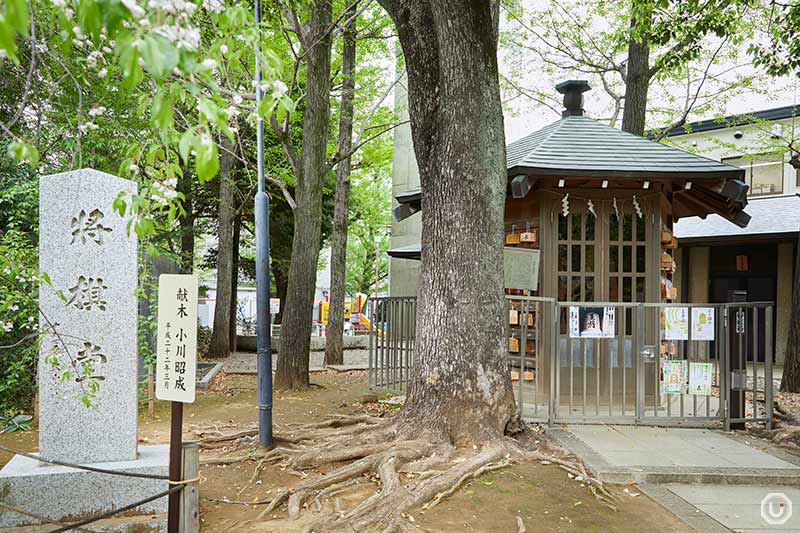
A large osho piece is enshrined at Shogido Hall
Every January, a prayer festival is held for Shogido Hall. The shrine also offers shogi-related omamori protective amulets, such as the ōte kachimamori and the ōte mamori, for victory in shogi.
Shogido Hall has become a sacred site for shogi players, with many visitors praying for improved shogi skills.
Majestic main hall and charming souvenirs
The majestic Hatonomori Hachiman Shrine’s main hall was once destroyed in 1945 during the Pacific War. The current shrine building, completed in 1993, is a reconstruction that restores its former appearance, made entirely of zelkova wood.
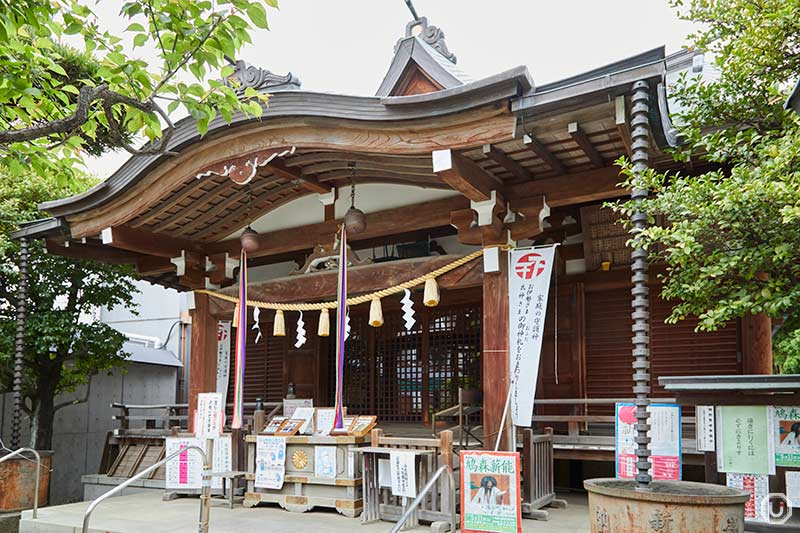
After offering your prayers with two bows, two claps, and one bow, you can visit the shrine office on the left side of the main hall to receive omamori as well as a goshuin (shrine seal).
Hatonomori Hachiman Shrine features several dove-themed items, reflecting the shrine’s name which includes the word hato (dove).
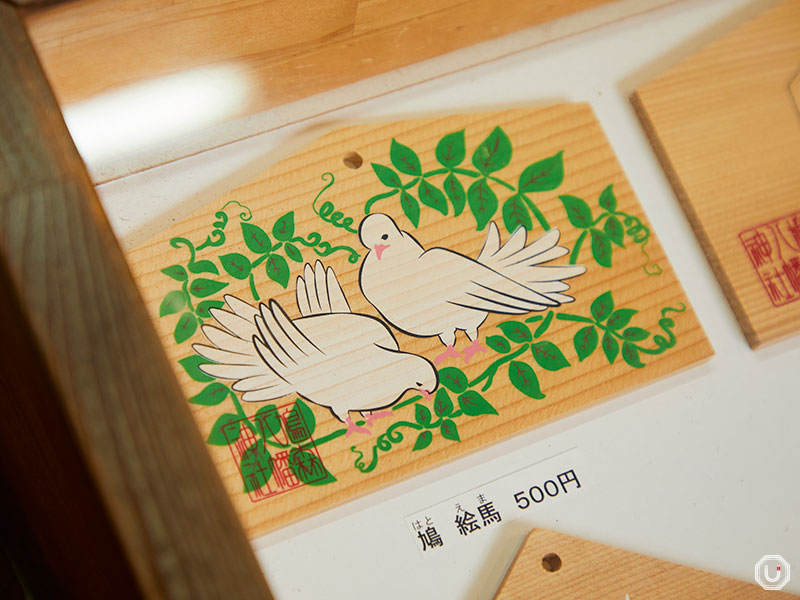
The ema votive tablets where visitors write their wishes also feature doves
One of the most charming items is the hato mikuji (dove fortune). When these omikuji (paper fortune slips) are tied on the mikujikake fortune-tying ropes, it looks like doves huddling together, adding to their cuteness.
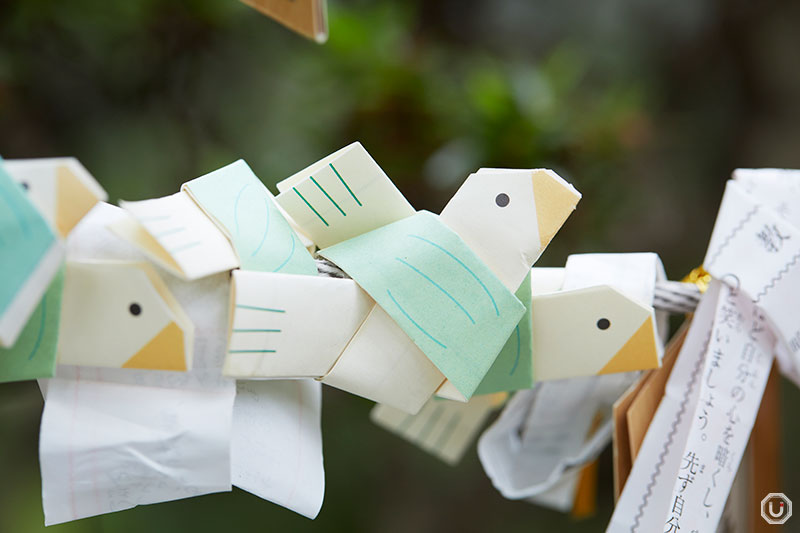
Hato mikuji
Moreover, Hatonomori Hachiman Shrine offers foreign language omikuji for international visitors. These omikuji are available in five languages: Japanese, English, Korean, Simplified Chinese, and Traditional Chinese.
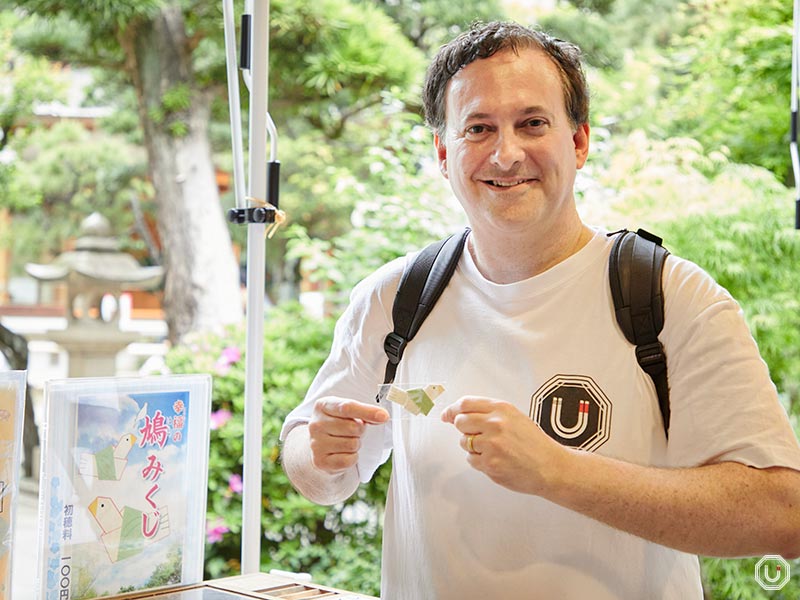
You can receive goshuin from 9:00 AM to 5:00 PM. If you provide a hatsuhoryō (traditionally the first fruit of the season, but now a monetary offering) of 500 yen, you can have your goshuin book stamped on-site.
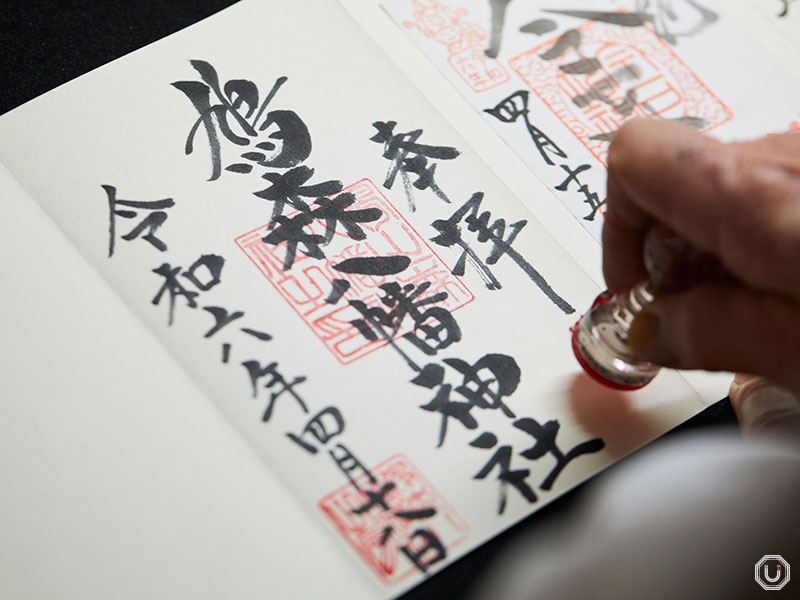
Hatonomori Hachiman Shrine also offers a special goshuin for climbing the Fujizuka, called the Sendagaya Fuji Tohai Goshuin. The hatsuhoryō is also 500 yen. Why not collect both types?
The Noh Theater Stage: A glimpse into Japanese history and culture
Within the shrine grounds, there’s a glass-walled building, the nōgakudō (Noh Theater Stage). Here are held performances of the classical Japanese dance-drama Noh, as well as kyōgen, the comic theater form which developed alongside it.
The nogakudo at Hatonomori Hachiman Shrine is used for Noh practice several times a week. You might be lucky enough to catch a Noh practice session up close.
During our visit, we observed a practice by Noh performer Manjiro Tatsumi, and our editorial staff was graciously invited to join.
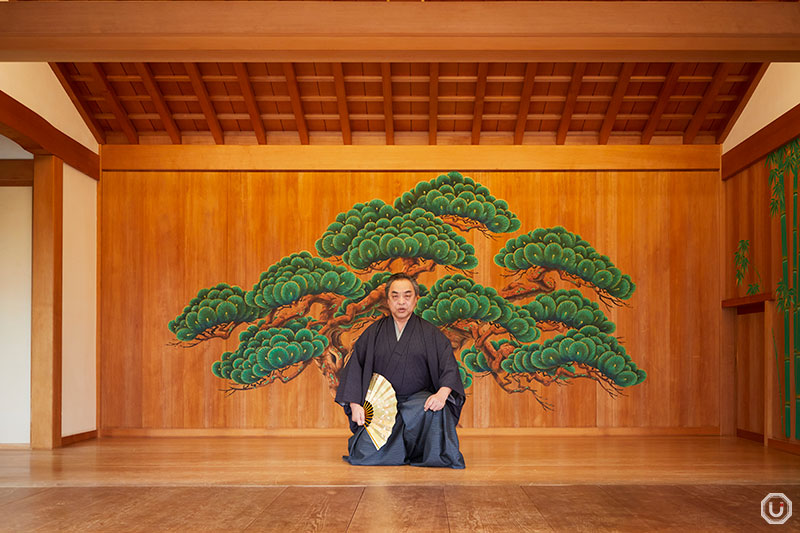
Noh performer Manjiro Tatsumi
In addition, Hatonomori Hachiman Shrine hosts the annual Hatonomori Takigi Noh performance, using the nogakudo as the stage. Takigi Noh is a summer night performance of Noh, held outdoors with bonfires illuminating the stage. Check the shrine’s official website for performance information for a chance to experience authentic Noh.
Watching Noh, with its rich background and historical ties, will undoubtedly stimulate your curiosity for Japan and deepen your understanding of it.
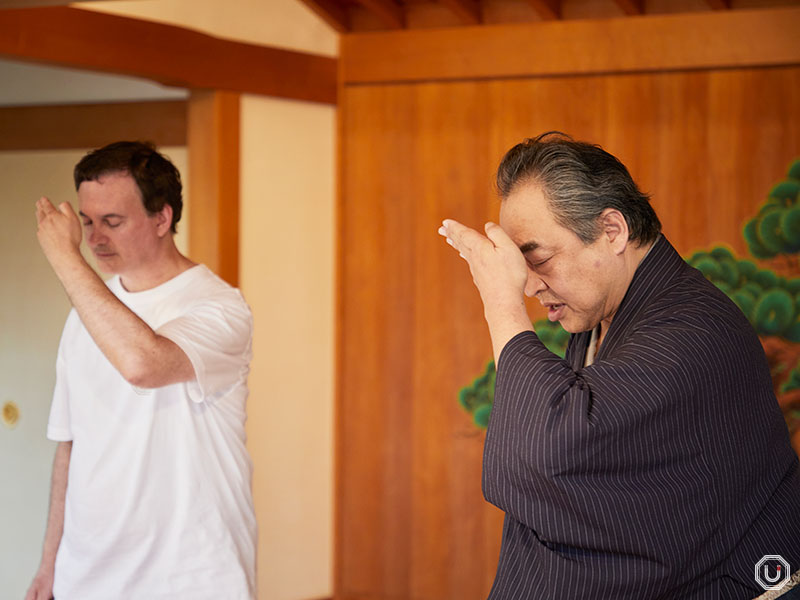
Surrounded by lush greenery, Hatonomori Hachiman Shrine is also recommended for those who wish to connect with nature.
Moreover, Sendagaya Fujizuka, the nogakudo, and Shogido Hall will surely increase your interest and appreciation of Japanese history and culture.
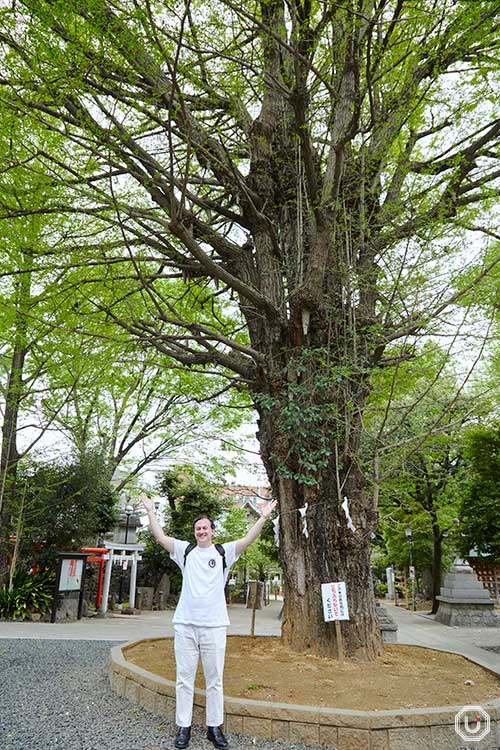
Hatonomori Hachiman Shrine’s sacred tree is a large ginkgo that survived the ravages of war
Shrine Information
| Name | 鳩森八幡神社 Hatonomori Hachiman Shrine |
|---|---|
| Address | 1-1-24 Sendagaya, Shibuya-ku, Tokyo
|
| Access |
Sendagaya Station 4-minute walk from the Sendagaya Station ticket gate
Kokuritsu-kyogijo Station 4-minute walk from Kokuritsu-kyogijo Station Exit A4 Kita-sando Station 5-minute walk from Kita-sando Station Exit 2 |
| Phone number | 03-3401-1284 |
| Visiting Hours | 24 Hours |
| Sacred Items | Available from 9:00 to 17:00 |
| Goshuin | Available from 9:00 to 17:00 |
| Omikuji | Available from 9:00 to 17:00 |
| Admission fee | Free |
| Official website | https://www.hatonomori-shrine.or.jp/ |
| Other information |
|
※The information in this article is current as of April 2024.
